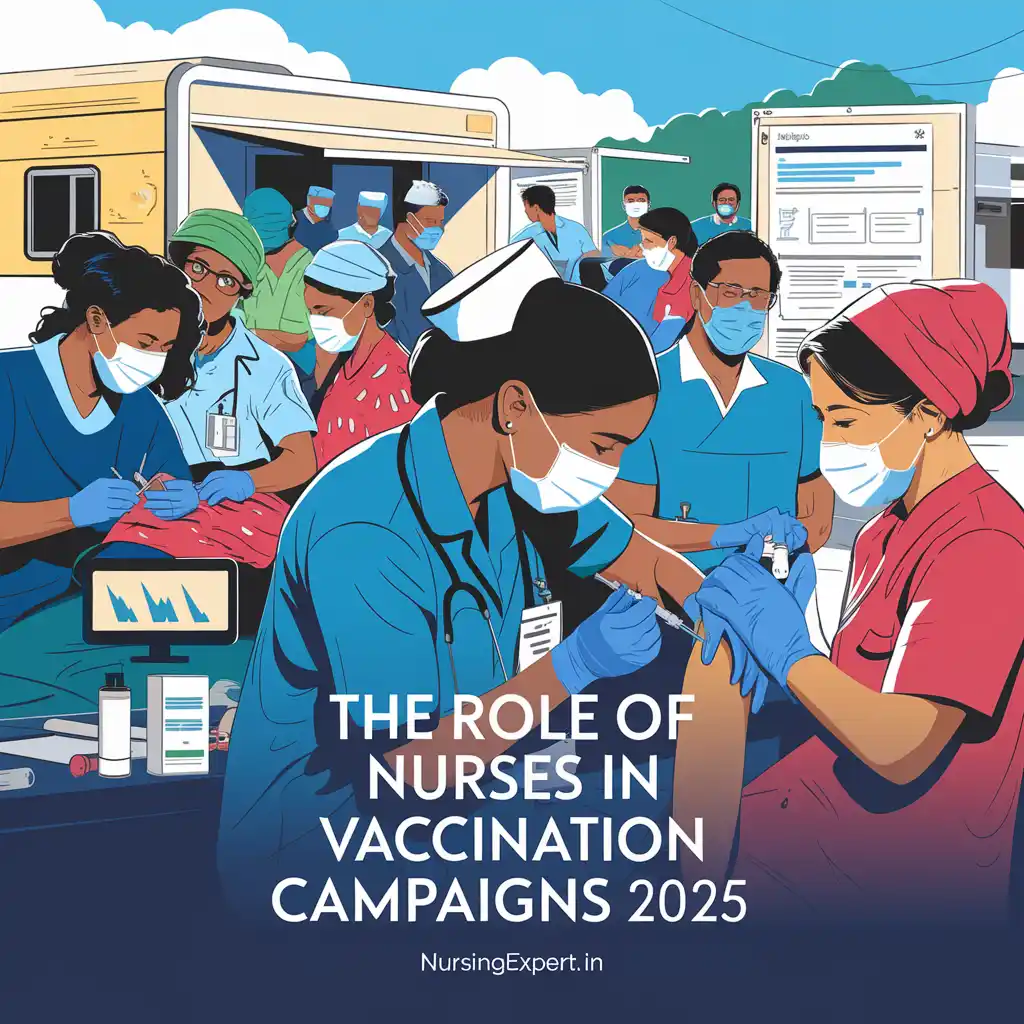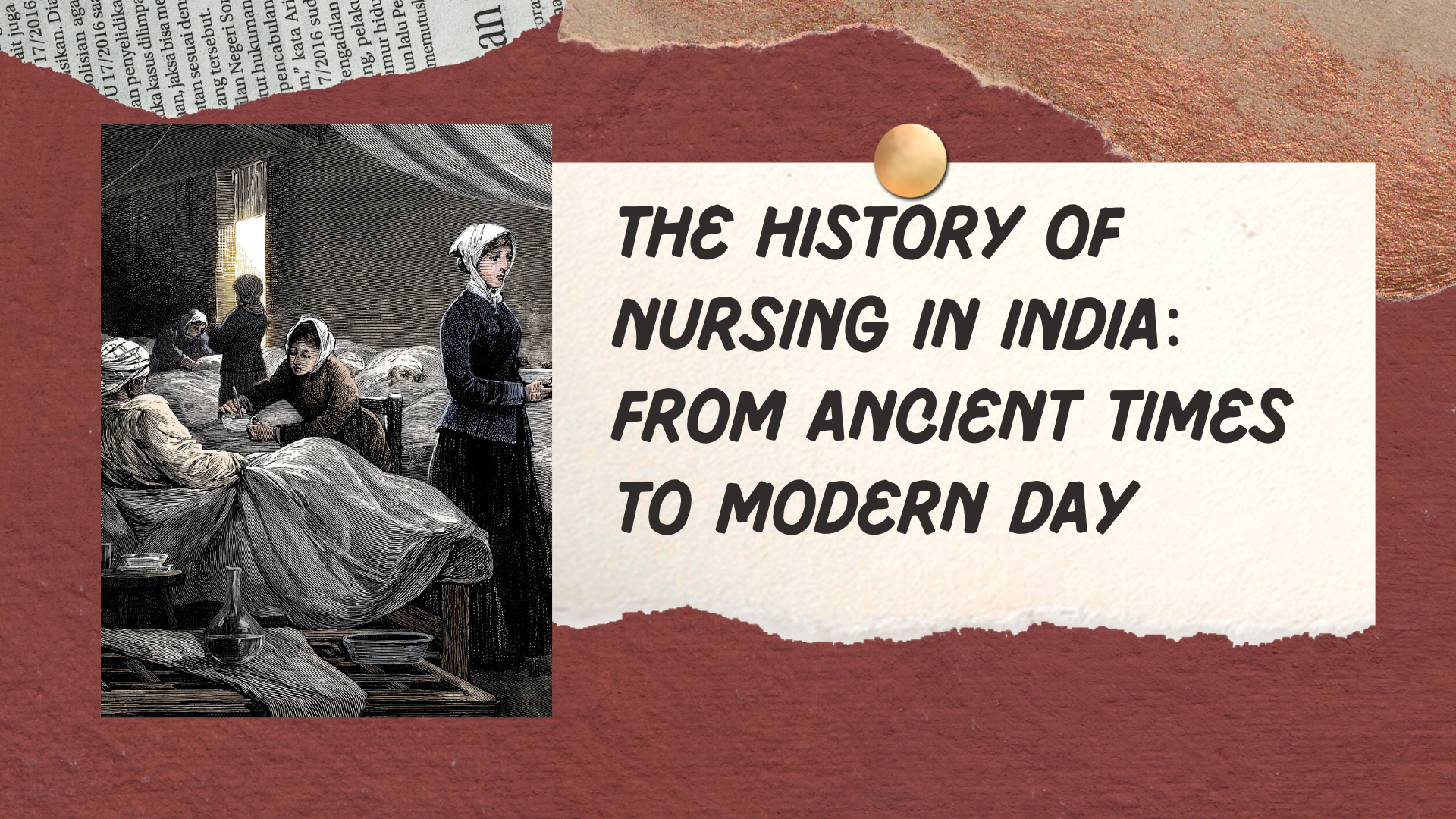Vaccination campaigns are one of the most critical public health initiatives in modern healthcare, especially in the wake of global pandemics and emerging infectious diseases. Nurses play an essential role in planning, implementing, and evaluating these campaigns. In 2025, the contribution of nurses extends beyond administering vaccines; they serve as educators, advocates, coordinators, and leaders in the effort to protect communities from preventable diseases. This comprehensive article examines the multifaceted role of nurses in vaccination campaigns, the challenges they face, and the innovative strategies they use to ensure high vaccination coverage and public trust.
Thank you for reading this post, don't forget to subscribe!
Introduction
Vaccination campaigns are essential to the prevention of infectious diseases and the promotion of community health. Nurses are at the heart of these campaigns, providing frontline care and public education that are crucial to building public trust and achieving high immunization rates. In 2025, with advances in vaccine technology and growing challenges from misinformation, the role of nurses has never been more significant.


This article explores the vital contributions of nurses in vaccination campaigns. It delves into the historical context, outlines key responsibilities, discusses challenges, and presents innovative strategies to overcome barriers. Ultimately, the goal is to highlight how nurses are indispensable in protecting public health through effective vaccination initiatives.
Historical Perspective on Vaccination Campaigns
Vaccination campaigns have a long history dating back to the development of the smallpox vaccine in the late 18th century. Over the decades, immunization programs have evolved, leading to the eradication of smallpox and dramatic reductions in diseases like polio, measles, and diphtheria. Nurses have always played a pivotal role in these efforts, providing both clinical expertise and compassionate care.
Milestones in Vaccination History
- Late 1700s: Edward Jenner’s smallpox vaccine lays the foundation for immunization.
- Mid-1900s: Mass immunization campaigns lead to the eradication of smallpox.
- Late 20th Century: Expanded immunization programs drastically reduce childhood diseases.
- Early 21st Century: Global vaccination efforts target emerging diseases and pandemics, such as H1N1 influenza and COVID-19.
- 2025: Innovations in mRNA technology and other vaccine platforms further enhance the effectiveness and speed of vaccine development.
The evolution of vaccination campaigns reflects not only scientific advancements but also improvements in public health strategies, with nurses consistently at the forefront of implementation.
The Importance of Vaccination Campaigns
Vaccination campaigns are essential for several reasons, impacting both individual and public health.
Preventing Disease Outbreaks
- Herd Immunity: Widespread vaccination helps achieve herd immunity, reducing the spread of infectious diseases.
- Outbreak Control: Effective campaigns prevent outbreaks by immunizing at-risk populations before diseases can spread.
- Global Health Security: High vaccination rates contribute to global efforts to control and eradicate diseases.
Protecting Vulnerable Populations
- High-Risk Groups: Infants, the elderly, immunocompromised individuals, and pregnant women are at higher risk of severe disease. Vaccination is particularly critical for these groups.
- Equity in Healthcare: Vaccination campaigns help bridge health disparities by ensuring that vulnerable populations receive protection.
- Economic Benefits: Preventing diseases reduces healthcare costs associated with hospitalizations and long-term complications.
Achieving Herd Immunity
- Community Protection: When a critical mass of the population is immunized, even those who cannot be vaccinated are indirectly protected.
- Sustainable Public Health: Maintaining high immunization rates supports long-term public health goals and prevents re-emergence of diseases.
Key Roles and Responsibilities of Nurses in Vaccination Campaigns
Nurses are essential to the success of vaccination campaigns. Their roles span from clinical care to community education and policy advocacy.
Patient Education and Counseling
- Informing Patients: Nurses explain how vaccines work, their benefits, and possible side effects.
- Dispelling Myths: Addressing vaccine hesitancy by providing evidence-based information and correcting misinformation.
- Culturally Sensitive Communication: Tailoring education to meet the diverse needs of communities and overcoming language barriers.
- Empowering Patients: Encouraging patients to ask questions and be active participants in their healthcare decisions.
Vaccine Administration and Clinical Care
- Clinical Competence: Administering vaccines safely and effectively, ensuring proper storage and handling of vaccines.
- Screening for Contraindications: Assessing patient histories to identify potential contraindications or allergies.
- Documentation: Accurately recording vaccine administration details, adverse reactions, and follow-up instructions.
- Post-Vaccination Monitoring: Observing patients for immediate adverse reactions and providing appropriate interventions if needed.
Community Outreach and Engagement
- Mobile Clinics: Participating in community-based vaccination drives and mobile health clinics.
- Public Health Campaigns: Collaborating with community leaders to promote vaccination events and public health messaging.
- Local Partnerships: Working with schools, religious institutions, and community centers to reach diverse populations.
- Advocacy: Encouraging public participation in vaccination campaigns through local media and social platforms.
Data Collection and Surveillance
- Monitoring Coverage: Collecting and analyzing data on vaccination rates and identifying gaps in immunization.
- Reporting Adverse Events: Contributing to national surveillance systems by reporting adverse reactions and vaccine efficacy.
- Quality Improvement: Using data to assess the effectiveness of vaccination campaigns and making evidence-based recommendations for improvement.
Interprofessional Collaboration and Leadership
- Team Coordination: Collaborating with physicians, pharmacists, public health officials, and community organizations.
- Policy Advocacy: Engaging in policy discussions to improve vaccination coverage and funding for public health initiatives.
- Leadership Roles: Serving as clinical leads in vaccination programs and mentoring new nurses on best practices.
- Research Participation: Contributing to research on vaccine efficacy, safety, and strategies to overcome vaccine hesitancy.
Challenges in Vaccination Campaigns
Despite the proven benefits, vaccination campaigns face several challenges that require targeted solutions.
Vaccine Hesitancy and Misinformation
- Mistrust in Healthcare: Some communities have deep-rooted skepticism towards medical interventions, fueled by historical injustices or misinformation.
- Social Media Misinformation: False information spreads rapidly online, influencing public perceptions about vaccine safety.
- Cultural Beliefs: Diverse cultural practices and beliefs can lead to vaccine hesitancy, requiring culturally tailored educational approaches.
Logistical and Resource Constraints
- Supply Chain Issues: Maintaining a consistent supply of vaccines, particularly in remote or underserved areas, remains a significant challenge.
- Storage Requirements: Vaccines often require strict temperature control, necessitating reliable cold chain systems.
- Workforce Limitations: Staffing shortages and high workloads can impede the smooth execution of large-scale vaccination campaigns.
- Funding Limitations: Insufficient funding may restrict the scope of campaigns and reduce access to vaccines.
Cultural and Language Barriers
- Diverse Populations: Effective communication with multicultural communities requires an understanding of cultural nuances and language differences.
- Tailored Messaging: Educational materials must be adapted to resonate with various cultural groups, which may demand additional resources.
- Community Engagement: Building trust within diverse communities takes time and consistent, culturally sensitive outreach.
Workforce Stress and Burnout
- High Workloads: During mass vaccination events, nurses face increased pressure, long hours, and heightened stress.
- Emotional Toll: Managing vaccine hesitancy and addressing public concerns can be emotionally draining.
- Retention Challenges: High levels of burnout may lead to staff turnover, exacerbating workforce shortages.
Innovative Strategies and Best Practices
Addressing the challenges of vaccination campaigns requires innovative strategies and collaborative efforts across multiple levels.
Leveraging Technology and Social Media
- Digital Platforms: Use social media, websites, and mobile apps to disseminate accurate information and counteract misinformation.
- Virtual Training: Provide online training modules and webinars for nurses to stay updated on vaccine protocols and communication strategies.
- Telehealth Services: Incorporate telehealth to conduct virtual consultations, answer patient questions, and follow up on vaccine-related concerns.
- Data Analytics: Utilize digital tools to monitor vaccination rates, identify gaps, and guide resource allocation effectively.
Community Partnerships and Mobile Clinics
- Local Collaborations: Partner with community organizations, religious institutions, and schools to expand outreach.
- Mobile Vaccination Units: Deploy mobile clinics to reach remote or underserved areas, ensuring that vaccines are accessible to all.
- Culturally Tailored Outreach: Develop community-specific programs that address local concerns and use culturally relevant messaging.
- Grassroots Engagement: Engage local leaders and influencers to build trust and encourage participation in vaccination efforts.
Training and Continuing Education
- Ongoing Education Programs: Invest in continuous education for nurses on the latest vaccination protocols, emerging research, and cultural competence.
- Simulation Exercises: Use simulation labs and virtual reality to practice vaccination procedures and emergency response.
- Interdisciplinary Workshops: Facilitate workshops that bring together nurses, physicians, and public health officials to share best practices and innovative strategies.
- Mentorship Programs: Develop mentorship initiatives to support new nurses and help them navigate the challenges of mass vaccination events.
Policy Advocacy and Funding Initiatives
- Government Support: Advocate for increased funding and resources to support vaccination campaigns, including improved supply chains and cold storage infrastructure.
- Legislative Action: Support policies that enhance vaccine access, expand nurse-led immunization programs, and address workforce shortages.
- Public-Private Partnerships: Engage with private organizations and foundations to secure additional funding and technical support for vaccination initiatives.
- Global Collaboration: Learn from international best practices and collaborate with global health organizations to adopt innovative solutions.
Case Studies and Success Stories
Case Study 1: Urban Vaccination Campaign Success
In a large urban center, public health nurses led a vaccination campaign targeting low-income neighborhoods with historically low immunization rates. By partnering with local community centers and churches, the nursing team organized several mobile vaccination clinics. They provided culturally tailored education, translated materials into multiple languages, and engaged local influencers to build trust. The campaign resulted in a 40% increase in vaccination rates over six months and significantly improved community engagement.
Case Study 2: Rural Outreach and Mobile Clinics
A rural healthcare network faced challenges in reaching dispersed populations. Public health nurses collaborated with local authorities to launch a mobile vaccination unit. The unit traveled to remote areas, providing vaccinations and health screenings. Nurses used telehealth tools to conduct follow-up consultations and monitor adverse reactions remotely. This initiative increased vaccination coverage by 35% in rural communities and reduced travel-related barriers to care.
Case Study 3: Addressing Vaccine Hesitancy Through Education
In a region affected by widespread vaccine hesitancy, a team of public health nurses implemented a comprehensive education program. They organized community forums, distributed evidence-based informational materials, and conducted one-on-one counseling sessions. The initiative addressed common myths and cultural concerns about vaccines. As a result, the program not only increased vaccination rates by 20% but also improved public trust in the healthcare system.
Case Study 4: Leveraging Technology for Efficient Campaigns
A healthcare organization in a metropolitan area integrated an AI-driven telehealth platform to manage a vaccination campaign. Public health nurses used wearable devices to monitor patients’ health post-vaccination and conducted virtual follow-ups to address any concerns. The digital platform streamlined appointment scheduling, data collection, and reporting. This tech-driven approach improved efficiency, reduced administrative burdens, and led to higher patient satisfaction.
Frequently Asked Questions (FAQs)
What is the role of nurses in vaccination campaigns?
Nurses play a vital role in vaccination campaigns by administering vaccines, educating patients, monitoring for adverse reactions, collecting and analyzing data, and coordinating with interdisciplinary teams to ensure successful implementation of the campaign.
How do nurses address vaccine hesitancy?
Nurses address vaccine hesitancy by providing clear, evidence-based information, dispelling myths, engaging with community leaders, and using culturally sensitive communication strategies. They also build trust through one-on-one counseling and public outreach.
What innovative technologies are used in vaccination campaigns?
Innovative technologies include telehealth platforms, wearable health monitors, AI-driven data analytics, mobile vaccination units, and digital educational tools. These technologies help streamline operations, monitor patient outcomes, and improve accessibility.
How do public health nurses manage logistical challenges in vaccination campaigns?
Nurses manage logistical challenges by collaborating with community organizations, organizing mobile clinics, utilizing digital scheduling and tracking systems, and advocating for adequate resources and funding. They also work to ensure that vaccines are stored and administered safely.
What strategies help improve vaccination rates in underserved communities?
Improving vaccination rates in underserved communities involves targeted outreach, culturally tailored education programs, mobile clinics, community partnerships, and leveraging technology to reduce barriers. Public health nurses also engage with local influencers to build trust and encourage participation.
How can ongoing education help nurses in vaccination campaigns?
Ongoing education ensures that nurses stay updated on the latest vaccination protocols, emerging research, and best practices. Continuous training in cultural competence, telehealth, and emergency response improves the quality of care and helps nurses adapt to evolving public health challenges.
Conclusion
The role of nurses in vaccination campaigns is indispensable, especially as public health challenges continue to evolve in 2025. Nurses are not only responsible for administering vaccines; they are at the forefront of educating communities, managing data, and advocating for policies that promote public health. By addressing vaccine hesitancy, overcoming logistical challenges, and leveraging innovative technologies, nurses are driving improvements in vaccination rates and overall community health.
As the world faces new threats from infectious diseases and global pandemics, the contribution of public health nurses remains critical. Their expertise, compassion, and leadership are key to ensuring that vaccination campaigns are successful and that communities are protected against preventable diseases. Through interdisciplinary collaboration, continuous professional development, and proactive community engagement, nurses will continue to play a central role in shaping the future of public health.
Addressing the nursing challenges in vaccination campaigns requires coordinated efforts at multiple levels—from policy reforms and increased funding to technological integration and community outreach. With a focus on evidence-based practices and patient-centered care, public health nurses are well-equipped to meet these challenges head-on and to make a lasting impact on the health and well-being of the populations they serve.
The evolving landscape of vaccination campaigns offers both challenges and opportunities. By embracing innovation and maintaining a commitment to public service, nurses will continue to be critical agents of change in the global fight against infectious diseases. The future of public health depends on resilient, well-supported nursing teams that are ready to lead vaccination initiatives and safeguard community health in a changing world.
References and Sources
- American Nurses Association (ANA). (2023). Nursing’s Role in Immunization and Vaccination Campaigns. Retrieved from https://www.nursingworld.org
- Centers for Disease Control and Prevention (CDC). (2024). Vaccine Administration Guidelines for Healthcare Professionals. Retrieved from https://www.cdc.gov/vaccines
- World Health Organization (WHO). (2024). Immunization Coverage and Public Health. Retrieved from https://www.who.int
- American Public Health Association (APHA). (2023). The Impact of Vaccination on Public Health. Retrieved from https://www.apha.org
- Peer-reviewed articles from the Journal of Public Health Nursing and Vaccine.
- Additional resources from the National Vaccine Information Center (NVIC) and state health departments.


